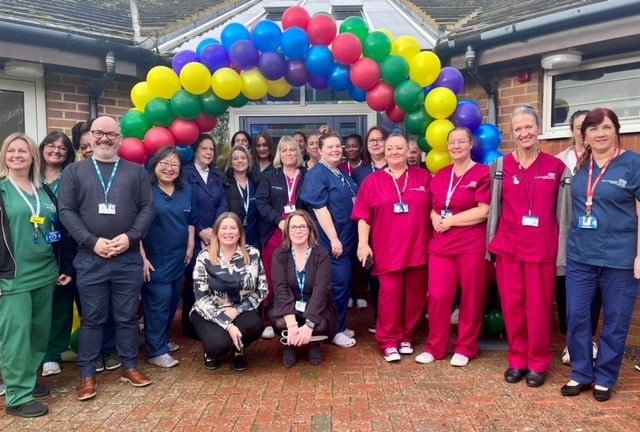Barts extends Cerner EPR to NHS Nightingale hospital
- 31 March 2020

Barts Health NHS Trust, which has been confirmed as the trust managing NHS Nightingale, will run the new hospital as it sixth site, using its core clinical information systems.
Cerner is supplying its electronic patient record (EPR) software to NHS Nightingale, the temporary ICU hospital being jointly set up with the army at London’s ExCel conference centre to treat coronavirus patients.
Remarkably, the huge IT project has been achieved in less than a week, with the Barts Health team led by CIO Sarah Jensen. The project has included extending its main clinical information systems into the new hospital plus put in place the necessary infrastructure, working with suppliers including Cerner, Cisco and Block.
Marc Chang, CEO at Block, called the project “an incredibly complex challenge against a demanding timeline”.
The hospital will additionally use the Sectra radiology information system (RIS) and CliniSys pathology software that are in use at Barts Health, Digital Health News understands.
It is understood that go-live is being readied to coincide with the first patient admissions this week, possibly as early as Wednesday.
Cerner confirmed that NHS Nightingale’s EPR will be an extension of the Cerner Millennium system already in place at Barts Health NHS Trust, the largest NHS trust in England.
Digital Health News understands that the decision to use Millennium was taken just a week ago, with the army previously proposing a lightweight patient flow solution.
David van Heel, deputy CCIO of Barts Health, tweeted praising the “extraordinary team effort” behind NHS Nightingale’s IT installation, which has seen informatics teams additionally install data networks, Wi-Fi, and thousands of PCs.
https://twitter.com/dvh13/status/1244705220350926849
Sharing Barts Health’s EPR means that the staff working at the Nightingale Hospital will use most of the technology and processes already successfully implemented across the Trust’s five hospitals. It also means that any staff from Barts Health providing care in the temporary hospital will already have access to the system, which will reduce the need for additional training.
Barts Health’s EPR is already connected with the network of pathology services providers in East London. Along with those working in Barts’ permanent hospital sites, staff at the Nightingale Hospital will be able to request tests and access results electronically, with the view to allowing the hospital to discharge recovered patients more quickly and maximise capacity.
Cerner’s Health Information Exchange will additionally patient data to be shared between Barts Health and the local primary and community care providers across London, which can then be shared to other acute NHS trusts in the capital via the OneLondon Local Health and Care Record Exemplar.
This connectivity will give clinicians at the Nightingale Hospital real-time access to information about a patient’s health and care history journey regardless of where they have been transferred from – helping to improve care coordination and efficiency.
Distie Profit, managing director at Cerner UK, said: “These are unprecedented and extremely difficult times for the NHS and our clients in the UK. Having been asked to support this temporary facility and extend our support to the NHS makes us feel honoured and humbled in equal parts.
“Working closely together, NHS and Cerner teams have managed to get this new facility created within the system in just a matter of days. This goes a long way to show the great things we are all able to achieve when we work together towards a single goal, and for the benefit of millions.”
Block CEO Chang added: “Through trusted relationships and a true partnership approach, we’ve been able to support Barts Health NHS in responding rapidly and effectively in their battle to save lives.”
Absolutely incredible! Hats off to @GutteridgeC and Sarah Jenson’s leadership and teams! If an entire hospital infrastructure can be set-up in days/week. Imagine – what could be achieved in six months across the country with the right conditions and support.
— Sonia Patel (@chat2sonia) March 30, 2020
Sonia Patel, NHX’s newly-appointed chief information officer, also credited the programme of work.
She tweeted: “Absolutely incredible! Hats off to [CCIO Charles Gutteridge] and Sarah Jensen’s leadership and teams! If an entire hospital infrastructure can be set-up in days/week. Imagine – what could be achieved in six months across the country with the right conditions and support.””





1 Comments
Massive shout out to the internal ICT team at NHS England and NHS Improvement too. They’ve underpinned this by providing resource, expertise, co-ordination and procurement of ICT equipment.
Comments are closed.